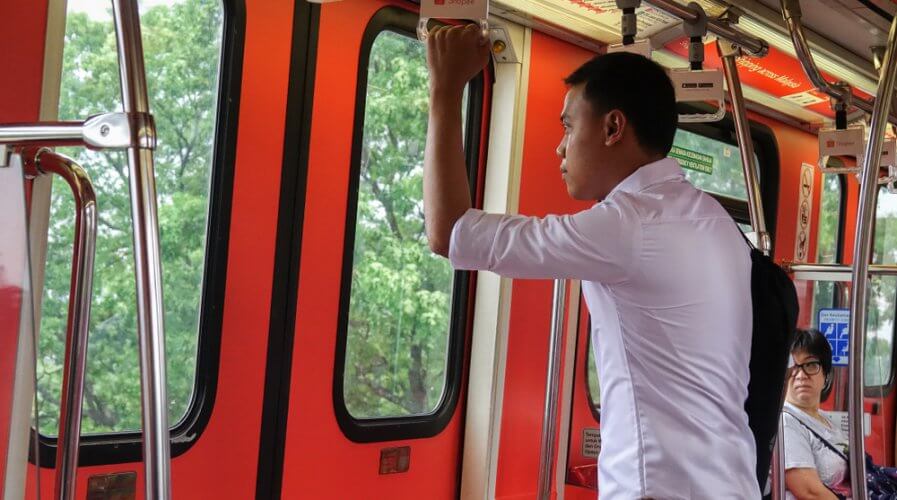
Tune Protect is keen on driving micro and nano-insurance via digital. Source: Facebook / Tune Protect
Tune Protect Chief says the future of insurance is invisible
INSURANCE is sold, not bought. It’s marketed to people who’re afraid they’ll lose their home to a fire or be unable to pay for treatment when injured in an accident.
Although insurance is a US$4.8 trillion market (gross written premiums, 2017), it’s also an industry that is increasingly struggling to appeal to the digital-native customer and cope with their demands.
“Industry needs to be re-invented. The future of insurance is very much invisible,” remarked Tune Protect Group’s Chief Digital & Marketing Officer (CDMO) Loh Ben Jern.
In an exclusive interview with Tech Wire Asia, Loh shared a vision for a future state of insurance he calls “pre-safe”. He essentially intends to find a way to insert insurance (or rather, protection, as he calls it) into the lives of everyday people — but only at the right time, and in the right place.
Coming from the CDMO of the company, it might seem like a marketing strategy at first, but what Loh really means is that he sees insurers digitizing products to a point where they literally become part of a customer’s lifestyle.
“The intent is to protect the customer at every stage of life. Imagine insurance as an app on your phone. It detects that you’re near a popular adventure sports site and offers to protect you while you enjoy the experience.
“Via a simple pop-up at the right time and in the right place, you get a few hours of protection for a really small price. Wouldn’t that be wonderful?”
A change in insurance is long due
What Loh is evangelizing to his industry peers and colleagues is a shift to micro and nano insurance products — products protecting customers for a few hours to a few days based on what they’re doing at any instance in their life.
The shift away from traditional products to these new-age protection solutions, Loh believes, must happen now.
Currently, global insurance penetration rates are low and growing extremely slowly. According to EY, the figure was about 6.2 percent in 2015 and 6.3 percent in 2016.
Since micro and nano insurance is incredibly affordable and easily accessible, insurers moving to such products might see a drop in ticket size but could expect a massive uptick in total volume given the number of new individuals it could potentially bring into the fold.
“Going into a digital world, alongside other industries driving digital at an accelerated pace, insurers need to hurry up and make insurance a seamless, digital-first experience.”
Speaking of seamless, however, Loh warned against companies rushing to offer a digital experience without integrating their systems.
“Because seamless not only means offering protection at the right time and place but also involves paying out digitally — perhaps instantaneously — and companies need to think about that before diving headfirst into micro and nano digital protection offerings.”
The technology is the easy part for insurers
“Going digital is the only option for insurers, and the vision for this future state of insurance is only possible if the industry learns to collect data and use technology efficiently and intelligently.”
The biggest hurdle to building a forward-thinking business in the insurance industry is culture. The biggest enabler for insurers is technology.
Dealing with the culture is what Loh focuses his energy on, explaining to peers why a smaller ticket size doesn’t necessarily represent a dip in revenues.
Changing that mindset is hard, however, because of years of conditioning in a set of principles and processes that work despite all the challenges that the industry is subject to.
“Once insurers buy into the mindset, they can get the technology piece going fairly easily.”
Loh’s argument is that although the insurance companies are plagued by legacy infrastructure, migrating that data to build smart predictive models using machine learning is easy.
“What’s easier is leaving that data behind and collecting new data via handheld and IoT devices (with the right permissions and protections in place) — because the old data is going to be useless data in a couple of years. It’s the new data you collect that’s going to drive value in the coming years for a digital-first insurance market.”
Tune Protect CDMO Loh is convinced that the change is already underway in some parts of the world and will really transform the insurance market as we currently know it.
In his opinion, the future of the industry (and the world) is digital, but a cultural change in the insurance organizations is what’s needed to get the ball rolling.
READ MORE
- Strategies for Democratizing GenAI
- The criticality of endpoint management in cybersecurity and operations
- Ethical AI: The renewed importance of safeguarding data and customer privacy in Generative AI applications
- How Japan balances AI-driven opportunities with cybersecurity needs
- Deploying SASE: Benchmarking your approach








